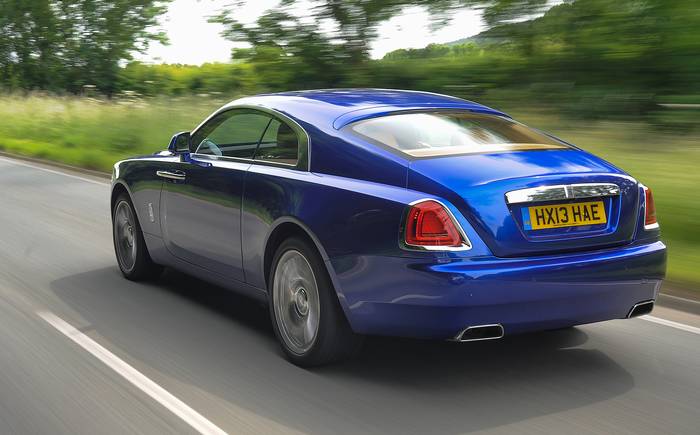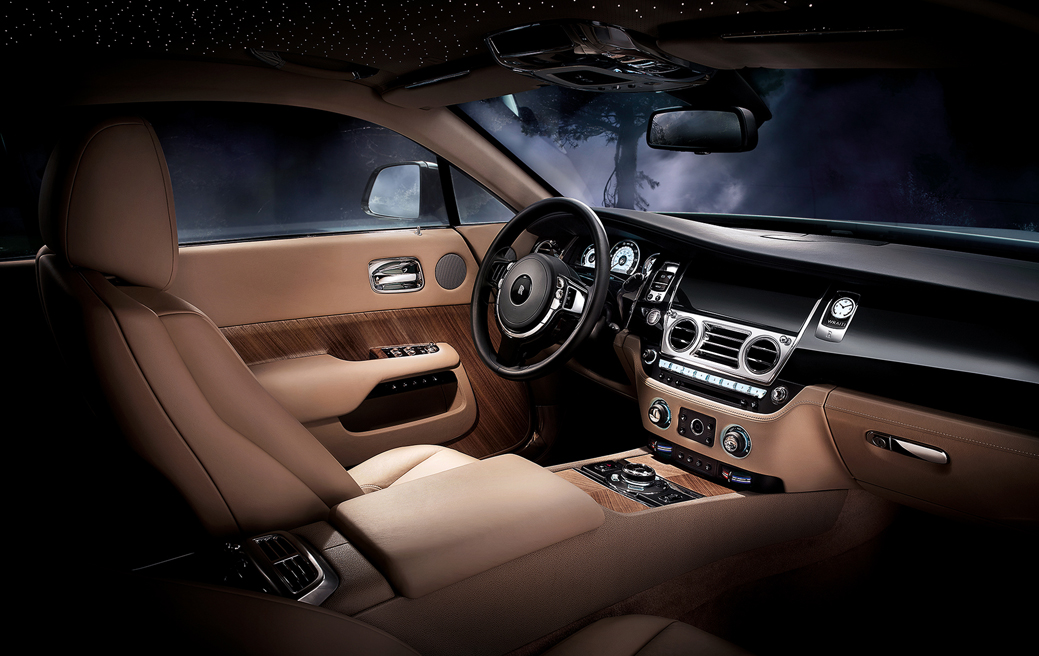First drive review: Rolls-Royce Wraith (2013)
Forgive me, Rolls, for treading on your dancing bear's toes

Recently I was among a few hand-picked journalists invited to a secret rendezvous at the Rolls-Royce factory in West Sussex to see its new Wraith. The plan was to let us drive Rolls’s latest coupé, presumably in the hope that we’d tell the world what a wonderful addition to its range it was.
But privileged access is no guarantee of an uncritical review, and in fact I’d rank this car as my least favourite of the three current Rolls-Royce models, well behind the Ghost and the Phantom. Don’t get me wrong: it is brilliantly engineered and built, but there is something not quite right with it. A Rolls-Royce should by definition be a five-star car. This one, I’m afraid, merits only four.
Let me explain. As I gazed at the Wraith’s swept-back lines and read about its extra power, lowered and stiffened suspension and quicker, heavier steering, it seemed obvious that this was Rolls-Royce’s attempt at a sporty vehicle — a rival to the thundering performance of Bentley’s Continental GT, or Ferrari’s fabulous FF.
Yet during the accompanying presentation I noted studious avoidance of any reference to sportiness. It was like watching Basil Fawlty not mentioning the war.
Soon after leaving the factory, we were directed to the Goodwood racetrack, apparently the best place to test this allegedly unsporting car. There it became obvious that the Wraith’s 6.6-litre V12 motor has 61bhp more than that used in the four-door Ghost, making this not only the most powerful Rolls in history but more powerful than an Aston Martin Vanquish, Mercedes-Benz SLS GT or McLaren MP4-12C. It stormed out of the pits, passing 60mph in 4.4 seconds and reaching well over 100mph before the first corner hove into view.
The last time I attempted to drive a Rolls-Royce fast through a corner, it tried to run away and hide in a field. But the Wraith (I cannot bring myself to write just “Wraith” as the definite-article-averse Rolls-Royce insists it’s called) simply heaved into the turn, settled on its new springs and thundered through. And it did so for turn after turn and lap after lap. It was accurate, capable and undoubtedly, er, sporting. I’d even call it fun, just for the improbability of it all. Like a dancing bear, it’s not the moves it makes that get your attention, but the fact it’s making them at all.
The Wraith is helped by its revised suspension and steering relative to the Ghost, whose platform it shares. It also has a fatter rear track and a 7in chunk removed from its wheelbase. That makes it shorter, wider and lower in door count than a Ghost.
Yet this is still a sumptuous and wonderful place to spend the time, even if you’re tall and forced to sit in the back. Rolls says there’s more room than in the back of either a Ferrari FF or an Aston Rapide, and having set the front seat for my 6ft 4in frame and then sat quite comfortably behind, I have no trouble believing it. It is a place of real luxury: the leather is Rolls’s finest, hitherto available only on the flagship Phantom; the wood is called Canadel panelling after the cove in the south of France where Sir Henry Royce used to spend the winter.
But the car’s most interesting feature, more interesting even than the 1,340 fibre-optic lights woven into the roof lining, cannot be seen. For the first time in any road car, the satellite navigation can talk to the gearbox. You might think two such different components would struggle for conversation, but you’d be wrong. For instance, if the nav knows there’s a roundabout coming up at a time when the eight-speed transmission would normally be about to change up, it’ll send a message and the gearbox will retain the lower ratio.
Likewise, if the road is winding and the car is being driven in a sporting fashion, the two will collude to make sure the car’s not changing up when road conditions dictate it should change down. It doesn’t work in 3D yet, so it can’t see hills, but Rolls-Royce’s parent company, BMW, is working on it. The effect is subtle, so subtle I’d need to drive the same road in another Wraith with the software disabled to know there was a difference. What I can tell you is that not once did the car appear not to know which gear was best.
Overall, the Wraith put in an impressive performance on the road. It would feel more at home on the Grande Corniche outside Nice than on tight English B-roads but I admired the way it managed its considerable bulk, and enjoyed its ability to dismiss traffic contemptuously, with no more than a flexing of your toes. But I liked less the fact that you could feel the road surface through the steering and chassis like no Rolls I’ve driven in the past decade. Of course this is exactly the kind of connection you seek in a sports car, but in a Rolls? I was not so sure.
This is the paradox the Wraith presents. It’s a Rolls-Royce that wants to be a sports car, a combination as appetising as mint sauce on Dover sole.
The Wraith remains a product of the highest workmanship and craft, of which its creators are right to be proud. But all things considered I’d rather have a Ghost. I’d do little with the Wraith’s additional performance and would value more the Ghost’s extra space, its better looks and its world-class ride quality.
If I were rich enough to own one, I’d be rich enough to have any number of far superior sporting cars in my dehumidified, air-conditioned, Wilton-carpeted garage. The Wraith is a better driving machine than any other Rolls in history, but at the price of being less of a Rolls-Royce.
Verdict ★★★★☆
The Rolls your chauffeur will thank you for.
Factfile
- Engine:
- 6592cc, 12 cylinders
- Power:
- 624bhp @ 5600rpm
- Torque:
- 590lb ft @ 1500rpm
- Transmission:
- 8-speed automatic
- Acceleration:
- 0-62mph in 4.6sec
- Top speed:
- 155mph (limited)
- Fuel:
- 20.2mpg
- CO2:
- 327g/km
- Road tax band:
- M
- Dimensions:
- L 5269mm, W 1947mm, H 1507mm
Rolls Royce Wraith rivals
Bentley Continental GT Speed, £151,000
For Huge performance; sumptuous interior design; flawless build quality Against The V8 version is both cheaper and better
Ferrari FF, £227,142 (on sale spring 2014)
For Ferrari’s most usable car; wonderful noise Against Immense size; four-wheel drive compromises handling





